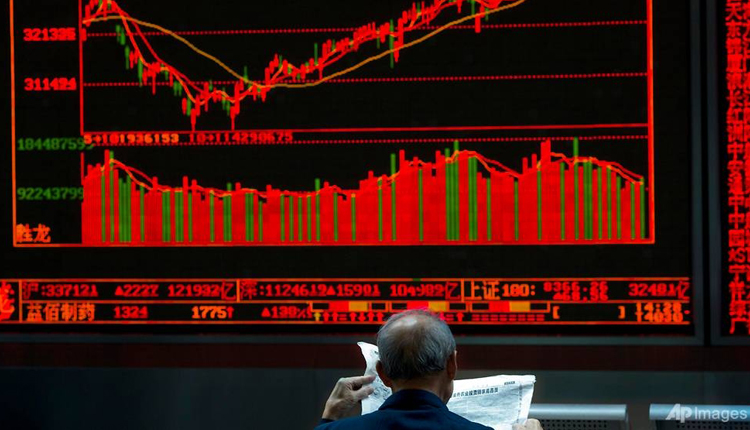Asian markets were mixed on Tuesday amid renewed tensions between the U.S. and China after Washington said tariffs on Chinese goods will rise on Friday.
The Chinese markets, which plunged more than 5% on Monday, attempted to stage a recovery during Tuesday’s session. The Shanghai composite rose 0.69% to close at about 2,926.39 and the Shenzhen component added 1.63% to finish its trading day at 9,089.46. The Shenzhen composite advanced 1.617% to close at approximately 1,540.31.
Meanwhile, Hong Kong’s Hang Seng index also added more than 0.3%, as of its final hour of trading, as shares of life insurer AIA gained beyond 1.5%.
The Nikkei 225 in Japan, which returned to the first day of trade following an extended holiday period, slipped 1.51% to close at 21,923.72 as shares of index heavyweight Fanuc dropped more than 3%. The Topix index also declined 1.12% to finish its trading day at 1,599.84.
Over in South Korea, the Kospi fell 0.88% to close at 2,176.99 as shares of Hyundai Motor dropped more than 1%.
Australia’s ASX 200, on the other hand, rose 0.19% to close at 6,295.70.
“I think what’s quite surprising here is just that people are surprised by what’s happened over the last few days,” Alexander Treves, managing director and investment specialist of emerging markets and Asia Pacific equities at J.P. Morgan Asset Management, told CNBC’s “Squawk Box” on Tuesday.
“Given the various people involved, surely an element of disruption was always going to be likely along the way through this process,” Treves said. “Our best guess at the moment is that this is a negotiating ploy.”
In overnight market action stateside, stocks recovered from most of their losses amid hopes that China and the U.S. will still strike a trade deal despite a recent re-escalation in tensions.
The Dow Jones Industrial Average ended the day down just 66.47 points at 26,438.48, while the S&P 500 closed 0.4% lower at 2,932.47. The Nasdaq Composite was down 0.5% at 8,123.29.
Shares on Wall Street made a stunning comeback from their intraday lows, with the Dow plunging as much as 471 points at one point, after CNBC reported that a Chinese delegation will still travel to the U.S. to continue negotiations this week, albeit with a smaller group than originally planned. Chinese Vice Premier Liu is also expected to join the delegation in Washington.
Stocks across the globe were caught in a whirlwind on Monday after U.S. President Donald Trump said in a Sunday tweet that current 10% tariffs on $200 billion worth Chinese goods were set to increase to 25% on Friday. Trump also threatened to impose 25% of tariffs on an additional $325 billion of Chinese goods “shortly.”
“Implementation of the increased tariff levels on Friday could be a final nail in the coffin for these trade talks as well as the equity bull run which we’ve seen since the beginning of the year,” analysts at Rakuten Securities Australia wrote in a morning note. Stocks have been on a tear for much of 2019 so far amid earlier signs that the U.S. and China could be close to reaching a deal to end their protracted trade war.
The U.S. dollar index, which tracks the greenback against a basket of its peers, was at 97.429 after touching levels above 97.6 yesterday.
The Japanese yen, widely viewed as a safe-haven currency, traded at 110.68 against the dollar after touching highs below 110.5 in the previous trading session.
The Australian dollar changed hands at $0.7032, bouncing from an earlier low of $0.6979, after the Reserve Bank of Australia kept interest rates on hold.
The RBA ended its monthly policy meeting by keeping rates unchanged at 1.5 percent, where they have been since mid-2016.
Oil prices were mixed in the afternoon of Asian trading hours, with the international benchmark Brent crude futures contract slipping 0.14% to $71.14 per barrel. U.S. crude futures rose 0.13% to $62.33 per barrel.
Source: Reuters
